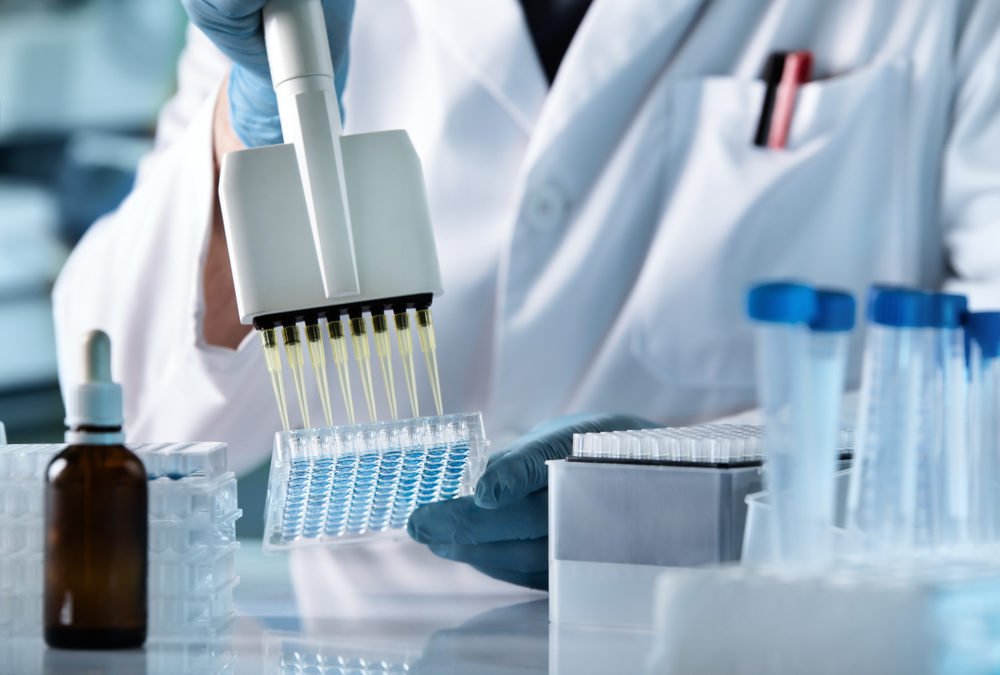Assessment of vaccine-induced immune responses in clinical trials will require highly specific diagnostic assays to ensure safety. This blog was originally published on Clinical Lab Manager.
The Vaccine Race
Vaccines are the most effective means of preventing infectious disease and COVID-19 is no exception. Given the speed at which SARS-CoV-2 has hit healthcare systems and the ensuing paralysis of the global economy, the timely development of a vaccine for COVID-19 has become one of the most urgent public health priorities in a decade.
A broad range of vaccines are being developed against SARS-CoV-2, and nearly all aim to target the immunodominant Spike protein, given its ability to elicit neutralizing antibody responses. The advantage of such vaccines is that they may be able to prevent SARS-CoV-2 binding its cell surface receptor (ACE2) and effectively halt COVID-19 in its tracks. However, developing a safe and effective vaccine in a timely manner will require thorough assessment of the immune response that it generates.
Safety First
Following the emergence of SARS in 2002, numerous Spike vaccine candidates entered the pre-clinical pipeline. However, it became apparent that vaccine-induced antibody responses could in fact enhance infection in animal models. In macaques, for example, anti-Spike IgG transfusions followed by SARS challenge resulted in severe lung injury, despite lowered viral loads. These observations appeared to mirror patient studies, whereby patients who most quickly developed anti-Spike IgG were more likely to develop severe forms of the disease, and was suggested as a contributing factor to the higher fatality rates in China.
Follow-up studies identified antibody-dependent enhancement (ADE) as the culprit—a phenomenon in which antibodies raised against one coronavirus enhance the pathogenesis of another similar, but distinct, coronavirus upon successive infection. When you consider that nearly everyone experiences a seasonal coronavirus infection at some point during their lifetime, the potential for ADE from emergent strains becomes very plausible.
SARS disappeared as quickly as it emerged, and its vaccine pipeline was soon shelved. Yet, the recent emergence of SARS-CoV-2 in Wuhan, China has brought its safety concerns back to the forefront. Indeed, there has been much speculation about the potential for vaccine-induced enhancement of infection from COVID-19 vaccines. This could be further enhanced by exposure to locally-circulating coronaviruses with similar epitopes, which may explain some of the geographical differences in COVID-19 fatality rates.
While it has yet to be proven if ADE is implicated in the pathogenesis of SARS-CoV-2, its potential to cause adverse events will have serious implications for the design of a COVID-19 vaccine.
Differentiating the Immune Response
To assess the safety of vaccine candidates, researchers will need to thoroughly assess patient antibody responses in a qualitative and quantitative manner. To do so, highly specific and sensitive immunoassays must be designed and calibrated to differentiate immune responses.
However, considering that vaccine-induced anti-Spike IgG levels may be indistinguishable from those conferred by natural infection, alternative antigens will be needed to design vaccine-specific assays. The main contender is the coronavirus nucleoprotein—a vital structural protein with the primary function of forming an RNA complex to mediate packaging and replication. While not as immunodominant as Spike, it is highly immunogenic and profusely over-expressed during infection, making it a popular candidate for assay design.
However, given that nucleoprotein is conserved across coronavirus subfamilies, it can induce cross-reactive antibody responses, especially from its highly conserved N-terminal domain. These cross-reactive antibodies can create false-positive results—a real headache for assay developers and an added complication in clinical trials.
Assay Design with Specificity in Mind
To achieve immunoassay specificity, there are multiple routes of investigation. Classical enzyme-linked immunosorbent assays (ELISAs) measure the binding of patient sera antibodies to antigens, immobilized in microtiter wells. However, given that coronavirus nucleoproteins contain cross-reacting epitopes, alternative designs should be considered.
One approach is to coat anti-IgM onto a microtiter plate to capture IgM from patient sera and measure its reactivity with antigen (so-called μ-capture). However, such assays tend to be both complicated and time-consuming. More recent formats include blockade-of-binding (BoB) assays, in which antibodies compete to bind antigen, double antigen bridging assays (DABA) that use a double antigen sandwich to increase specificity, and the use of quenching antigens to ‘absorb-out’ cross-reactive antibodies.
Undoubtedly, the most crucial consideration when designing serological diagnostics is the identification, selection, and presentation of virus-specific epitopes. Due to safety restrictions, most of the antigens used in studies are expressed in recombinant systems that aim to faithfully represent the structure of the native protein in question. However, the degree to which these biological reagents can vary is significant, and structural fidelity is not always ensured. Therefore, to ensure reagents are suitably specific, expression in mammalian or insect systems is preferred to ensure proper folding and full glycosylation. Further improvements to reagent specificity can then be achieved through the screening of antigen arrays alongside mutation studies that aim to remove cross-reactive epitopes (amongst various other methods).
Unperturbed by the challenges that lie ahead, a slew of biopharmaceutical companies have thrown their hats into the ring with hopes for vaccine licensure by 2021.

